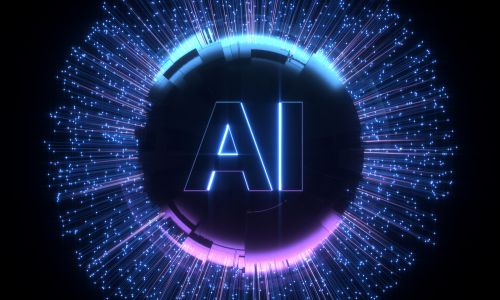Artificial intelligence (AI) has become a ubiquitous term, woven into the fabric of our daily lives. From virtual assistants answering our questions to algorithms recommending movies, AI is quietly transforming numerous aspects of our world. But what exactly is AI, and what are the different forms it can take? This blog post delves into the fascinating realm of AI, exploring the various types and their unique capabilities.
1. Narrow AI (Weak AI): The Specialists
Imagine a chess-playing computer that can consistently defeat grandmasters. This is an example of Narrow AI, also known as Weak AI. Narrow AI excels at performing specific tasks with exceptional proficiency, often surpassing human capabilities in those domains. Here’s a closer look at some prevalent forms of Narrow AI:
- Machine Learning (ML): This is a powerful technique where algorithms learn from data without being explicitly programmed. By analyzing vast datasets, ML algorithms can identify patterns, make predictions, and improve their performance over time. Facial recognition software, spam filters, and recommendation systems are all powered by ML.
- Deep Learning: A subfield of ML inspired by the structure and function of the human brain. Deep learning utilizes artificial neural networks with multiple layers to process complex data like images, text, and speech. Image recognition in self-driving cars and natural language processing for chatbots are driven by deep learning algorithms.
- Expert Systems: These are knowledge-based systems programmed with human expertise in a specific domain. They can diagnose medical conditions, troubleshoot technical problems, and answer questions within their specialized area. While not perfect, expert systems can provide valuable assistance and decision support.
2. Artificial General Intelligence (AGI): The Dream (or the Nightmare?)
Artificial General Intelligence (AGI), also known as Strong AI, represents the holy grail of AI research. It envisions machines that possess human-level intelligence and can perform any intellectual task that a human can. Imagine a robot that can not only play chess but also write a compelling novel or hold a philosophical conversation. AGI remains largely theoretical at this stage, and the path to achieving it is fraught with scientific and ethical challenges. The complexity of human intelligence, encompassing emotions, creativity, and social understanding, makes AGI a distant goal.
3. Artificial Narrow Superintelligence (ANSI): The Specialists on Steroids
While AGI focuses on general intelligence, Artificial Narrow Superintelligence (ANSI) takes the concept of Narrow AI to an extreme. It postulates the existence of AI surpassing human capabilities in a specific domain by a significant margin. Imagine an AI strategist formulating military tactics that are far superior to anything a human general could devise. While the potential benefits of ANSI in scientific discovery or problem-solving are vast, the risks associated with such powerful AI in the wrong hands necessitate careful consideration and robust safeguards.
4. Reactive Machines: The Simplest Form of AI
Reactive machines represent the most basic form of AI. They lack memory or the ability to learn from past experiences. They react solely to the current stimuli they receive. Simple rule-based robots that clean floors or automatic thermostats that adjust temperature based on the room’s environment fall under this category. These basic systems are effective for well-defined tasks in controlled environments.
5. Limited Memory Machines: Learning from the Immediate Past
Limited memory machines take AI a step further. They can store and access recent interactions or experiences to inform their current actions. Self-driving cars that can react to sudden changes in traffic or chatbots that can remember the context of a conversation for a few sentences are examples of this type of AI. By incorporating a limited memory, these systems exhibit a more nuanced form of behavior compared to reactive machines.
6. Theory of Mind AI: Understanding the Nuances of the Human Mind
Theory of mind AI delves into the complex realm of understanding and interpreting the mental states of others. This type of AI aims to recognize emotions, intentions, and beliefs, enabling them to interact with humans on a deeper level. Social robots designed to provide companionship or care for the elderly could benefit from theory of mind capabilities. However, accurately interpreting human emotions and intentions remains a significant challenge for AI.
7. Self-Aware AI: The Existential Question
Self-awareness in AI raises profound philosophical and ethical questions. Imagine an AI that possesses not only consciousness but also an awareness of its own existence. While this concept is far from becoming a reality, discussions about the implications of self-aware AI are crucial for responsible AI development. If machines become self-aware, what rights and responsibilities would they have? How would they interact with humanity? These are questions that scientists, philosophers, and ethicists must grapple with as AI research progresses.
The Evolving Landscape of AI
The field of AI is constantly evolving, with new research and advancements pushing the boundaries of what’s possible. The lines between these different types of AI can sometimes blur, and hybrid approaches combining various techniques are becoming increasingly common. As AI continues to develop, it’s essential to consider the ethical implications and ensure responsible development that benefits humanity.
The Human Element: Collaboration is Key
It’s important to remember that AI is not here to replace humans, but rather to augment our capabilities. The future lies in collaboration – humans leveraging the power of AI to achieve greater things, while providing the ethical compass and oversight for responsible AI development and deployment. Here’s how this collaboration might unfold:
- AI as a Powerful Tool: Imagine doctors using AI-powered diagnostic tools to improve medical decision-making or scientists utilizing AI to analyze complex data sets and accelerate research breakthroughs. AI can empower humans to be more efficient and effective in various fields.
- Human Expertise in the Loop: While AI excels at specific tasks, human judgment and creativity remain crucial. For instance, self-driving cars might rely on AI for navigation but require human input in complex or unforeseen situations. The ideal scenario involves AI and humans working together, each contributing their strengths.
- The Importance of Explainable AI: As AI algorithms become more complex, understanding how they arrive at decisions becomes critical. Explainable AI techniques can shed light on the reasoning behind AI outputs, fostering trust and enabling human oversight.
Beyond the Basics: Exploring the Applications
The different types of AI have found applications in a vast array of domains, transforming industries and shaping our everyday lives. Here are some captivating examples:
- Healthcare: AI is being used to analyze medical images for early disease detection, develop personalized treatment plans, and even perform robotic surgery with exceptional precision.
- Finance: AI-powered algorithms can analyze market trends, identify fraud risks, and automate financial tasks, streamlining operations and improving decision-making.
- Manufacturing: Industrial robots powered by AI can perform tasks with greater speed and accuracy, optimizing production lines and enhancing efficiency.
- Customer Service: Chatbots powered by AI and natural language processing can answer customer queries, resolve issues, and personalize the customer experience.
- Transportation: Self-driving cars, still under development, utilize various AI techniques for navigation, obstacle detection, and safe operation.
The Road Ahead: Embracing a Responsible Future of AI
As AI continues to evolve, navigating its potential benefits and challenges will be paramount. Here are some key considerations for a responsible future of AI:
- Ethical Considerations: Bias in AI algorithms can perpetuate societal inequalities. Developing and deploying AI with fairness and ethical principles in mind is crucial.
- Transparency and Explainability: Understanding how AI systems arrive at decisions fosters trust and enables human oversight. Explainable AI techniques can play a vital role in achieving transparency.
- Regulation and Governance: As AI becomes more sophisticated, robust regulations and governance frameworks will be necessary to ensure its safe and ethical development and deployment.
- The Future of Work: Automation through AI has the potential to displace certain jobs. Investing in education and skills training will be essential to prepare the workforce for the changing job landscape.
The development and deployment of AI hold immense potential for progress and innovation. By fostering human-AI collaboration, prioritizing responsible development, and addressing the ethical considerations, we can ensure that AI serves as a powerful tool for good, shaping a brighter future for humanity.
In Conclusion:
The world of AI is intricate and ever-evolving. By understanding the various types of AI and their capabilities, we can foster informed discussions and navigate the exciting possibilities and potential challenges that lie ahead. As AI becomes more integrated into our lives, let’s embrace its potential for positive change while ensuring its development is guided by ethical principles and a commitment to human well-being.



